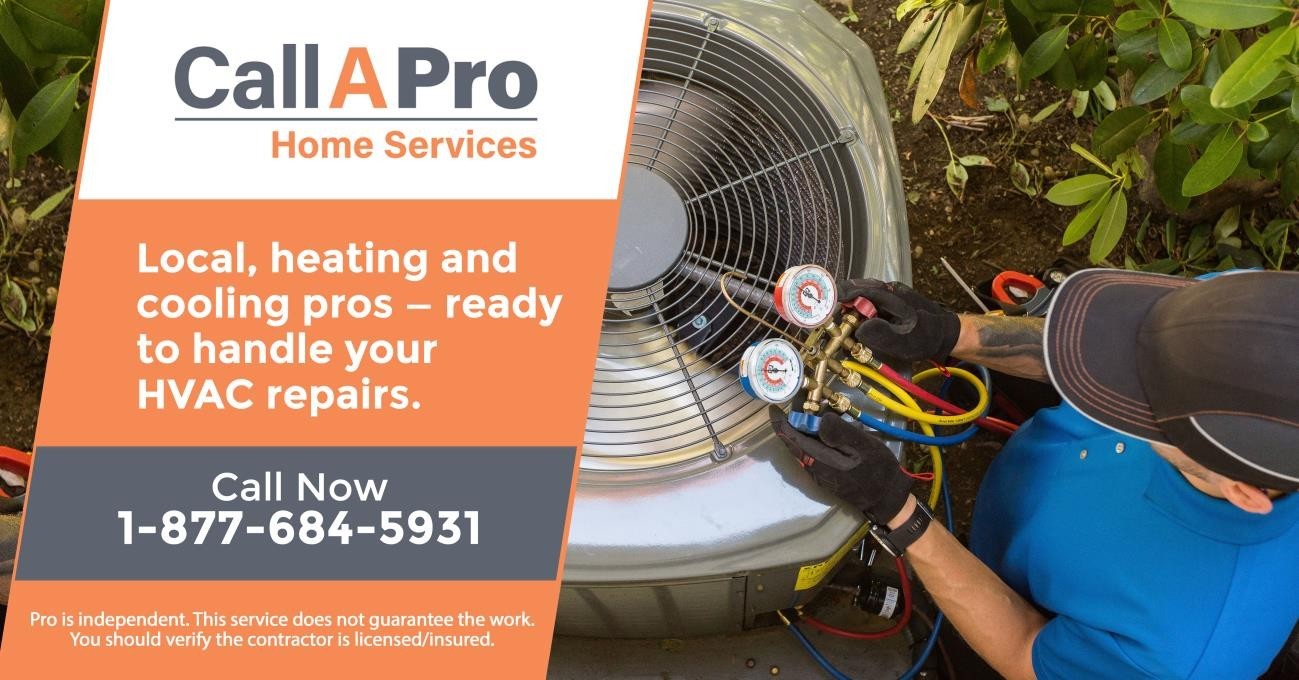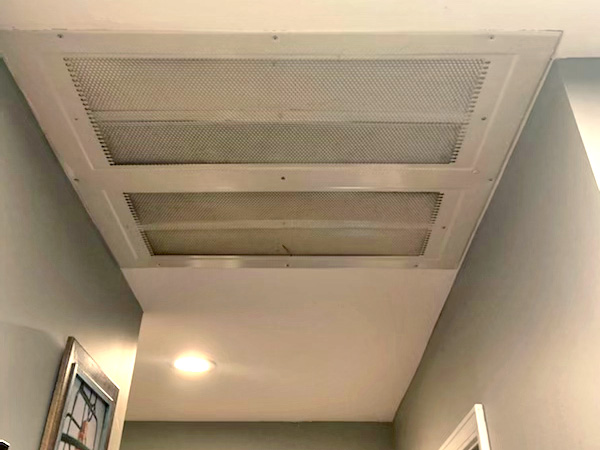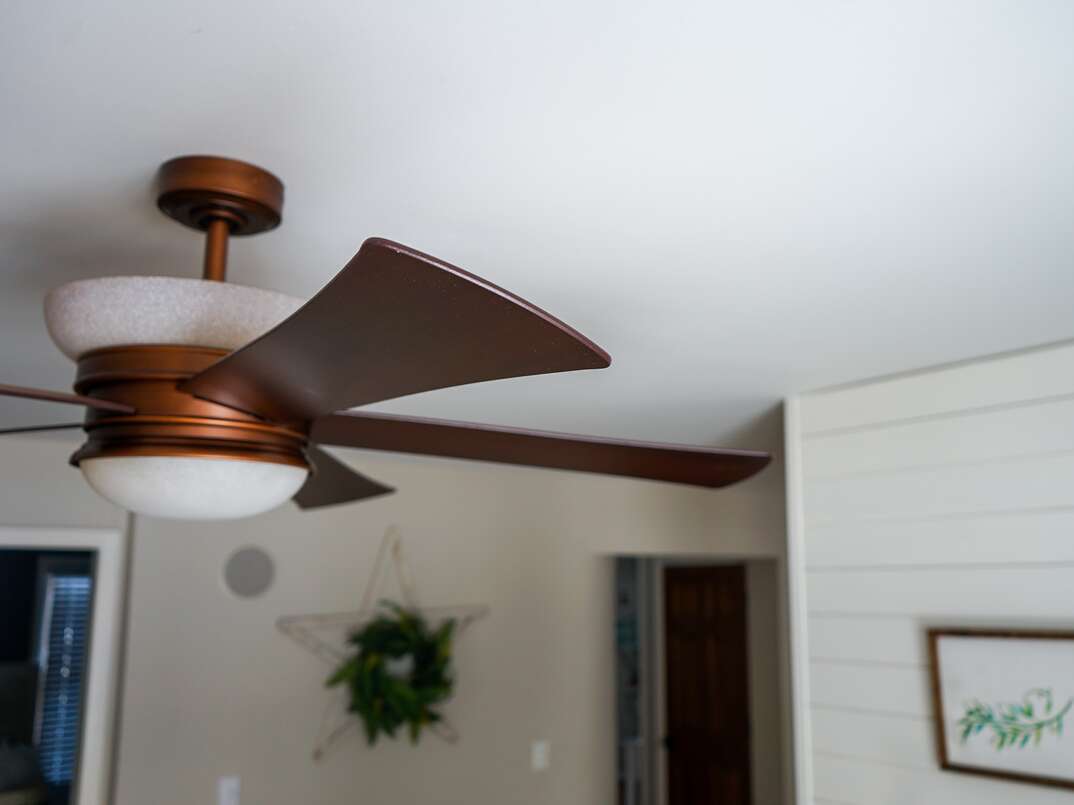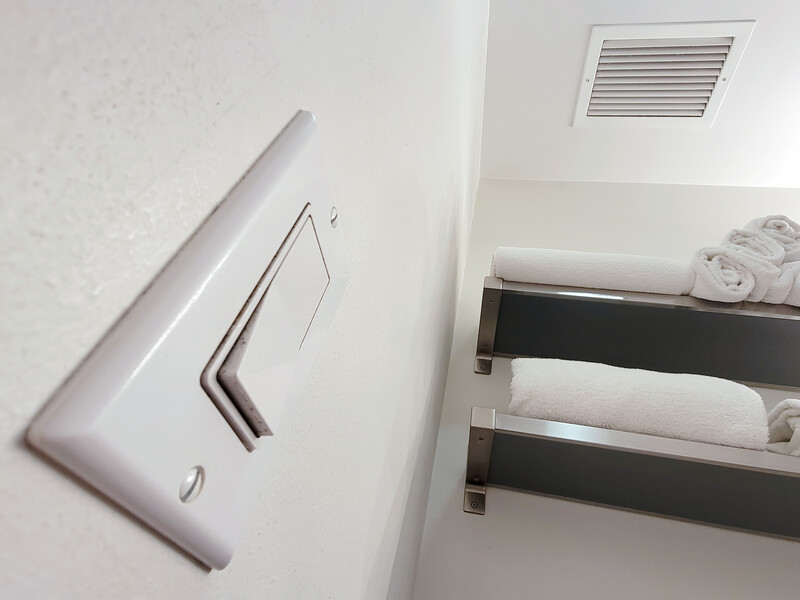How much does it cost to install an Air Conditioner?

Every winter I long for the warm, sun-filled days of summer. Still, there comes a time during the peak of the season where the heat becomes unbearable, and luckily, I’m able to seek refuge in my air-conditioned home.
Having a reliable air conditioner is the key to keeping your home a relaxing oasis. Depending on where you live, it may be providing you comfort for the majority of the year. But while all air conditioners serve the same purpose, there’s no one perfect system for every home.
Summer is fast approaching, so now is the time to begin thinking about if your cooling needs are being met or if it’s time for an upgrade. Here’s everything you need to know about air conditioner installation costs, from what system would work best for your home to common labor necessities.
Central air vs ductless AC
Most homeowners are presented with two options to keep their home consistently comfortable during the summer: central air or ductless air conditioning. While both will work to keep your home cool, they are best-suited for different needs and budgets.
Depending on the size and layout of your home, the climate you live in and your personal aesthetics, you may want to understand how these air conditioning models differ to make the best choice for your home.
Ductless AC:
Also known as mini-split systems, ductless AC can be installed directly into the walls of your home without the need for extensive ductwork. If you have a smaller home and want to keep specific rooms cool, these systems would be ideal. Though hidden behind the wall, the unit is still visible, as the cooling vent is typically located on the wall.
Ductless AC systems are easy to install and are quieter than most other cooling methods, but they are not a viable option for regulating temperatures evenly in the entire home.
On average, the cost to install a ductless system is between $1,500 to cool a single room, and upwards of $4,000 for a multi-system unit. If you want to cool a larger home or additional spaces, expect this price to increase.
Central Air:
If your home already has existing ductwork for forced hot air or you want to cool your entire home equally, central air is the best option. While more costly to install, in general, due to labor costs and unit sizes, central air is an unobtrusive way for consistent cooling, even in large, open spaces.
The cost to install central air ranges from $5,000 on the low end, and as much as $12,000 for a larger, more powerful system. If your home needs completely new ductwork this price can be on the higher-end of the spectrum, even upwards of $15,000. There’s a lot of variation for the price of installing a central air conditioning system because of all the factors involved from choosing the appropriate unit for your home to additional ductwork.
A breakdown by brand
Like any piece of equipment, prices for air conditioning systems can vary based on brand. Here are our picks for units that run the gamut of pricing and ratings:
| Brand | Average Cost | SEER Ratings |
|---|---|---|
| American Standard | $2,500 | 13 - 20 |
| Amana | $2,200 | 14 - 24.5 |
| Armstrong | $2,000 | 13 - 20 |
| Carrier | $3,300 | Up to 21 |
| Frigidaire | $3,000 | Up to 20 |
| Goodman | $2,500 | 14 - 19 |
| HEIL | $2,700 | Up to 19 |
| Lennox | $3,500 | Up to 26 |
| Rheem | $1,500 | Up to 23 |
| Ruud | $2,400 | Up to 20.5 |
| Trane | $2,871 | 14.5 - 22 |
| York | $3,200 | Up to 18 |
Of course, many brands have options on the higher and lower ends of the spectrum, but as you can see, the average price for a central air conditioning unit itself is around $3,000. An HVAC professional can help you understand how brands differ and which SEER rating and size is best for your home.
Other cooling considerations
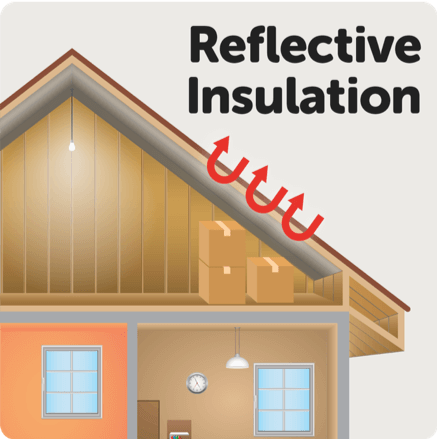
Your air conditioning system is only as effective as your home insulation. While you may typically think of insulation as a method to retain heat within your home, your air conditioner may be working harder than it has to due to heat entering through your attic.
According to the Department of Energy, the best way to keep your home cool is by installing radiant barriers and reflective insulation systems. Radiant barriers are typically installed in attics to reduce summer heat gain, and in turn, lower cooling costs. Reflective insulation incorporates radiant barriers into an insulation system backed by plastic film, kraft paper or cardboard, among other materials.
Radiant barriers reduce the radiant heat transfer from the underside of your roof to the other surfaces in the attic and can reduce cooling costs by 5-10% when utilized in a warm, sunny climate. Radiant barrier insulation can be purchased starting at 10 cents a square foot, but for double sided material this could cost upwards of 50 cents per square foot. Large swaths of the material can be purchased for a few hundred dollars, but with professional installation and depending on the size of your attic, you can expect to pay anywhere between $1,000 and $2,000 on this project.
When installing a new air conditioning system, you may want to consider upgrading your insulation and adding a smart thermostat to ensure your air conditioning system is not working harder than it has to.
Energy efficient models

If your air conditioning system is more than 10 years old, you could benefit from investing in a new energy efficient system. Most air conditioning systems produced today are far more efficient than the models of decades past. In fact, the Department of Energy estimated that today’s top performing models use 30-50% less energy to produce the same amount of cooling air as air conditioners made in the 1970s.
While most air conditioning systems can last 15 years, you could save 20-40% of your cooling energy costs by replacing a decade-old system with a newer, energy-efficient model. The Department of Energy measures energy efficiency tby a system’s season energy efficiency ratio (SEER).
The SEER is calculated by the cooling output for a typical cooling season divided by the total electric energy input during the same timeframe. The number provided, usually ranging from 13-22 is an efficiency rating. A good comparison is to think of a SEER rating as you would the miles per gallon for your car - it’s a measure of your systems maximum efficiency.
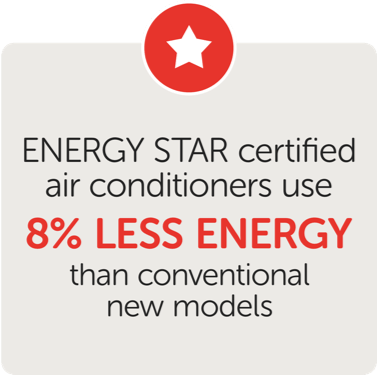
The U.S. Energy Information Administration reported that in 2023, all new residential central air conditioning systems must meet a new minimum energy efficiency standard. In the northern states, this means a SEER rating of no less than 14, and in the south, 15 SEER.
If you’re installing a completely new system and want an energy-efficient model, look for an ENERGY STAR certified central air conditioner unit. ENERGY STAR products meet or exceed the efficiency guidelines set by the Environmental Protection Agency. Certified air conditioners have higher SEER ratings and use 8% less energy than conventional new models.
Labor costs
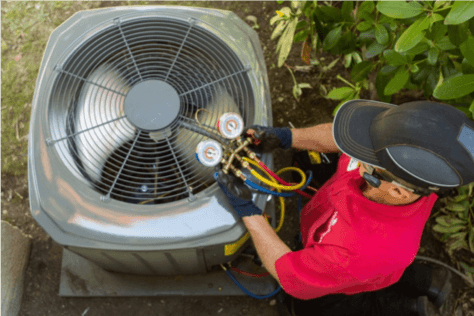
You will need a skilled HVAC specialist to properly install an air conditioning system, and they typically charge by the hour. Depending on where you live, hourly rates may vary, but you can expect to pay anywhere between $50-150 per hour, with a happy medium being around $75 an hour.
In all, it’s recommended homeowners dedicate anywhere from 35% to 45% of total installation budget to labor fees. Of course, a lot of this depends on the complexity of the job and time of year.
If you’re simply replacing your current air conditioner, a professional may be able to complete the job within a day. If new ductwork is required, this could add another few days to the project, and increase your materials and labor costs. Additionally, if your air conditioner is difficult to reach, needs to be removed by the professional or portions of your ducts or thermostat require additional work, you can expect labor costs to increase.
As is the nature of central air conditioning, it’s usually more expensive to install because of the ductwork involved. Expect a central air job to take longer, and therefore budget for more labor costs. On the other hand, installing a ductless mini-split is an easier job in comparison, usually just requiring a few holes to be made in the rooms you want air conditioning in. Depending on how many of these systems you want installed, the job could reasonably be completed within a day.
If you know you need a new air conditioning system before warm weather arrives, you’ll either need to act fast or wait until summer is over for lower rates. Most HVAC professionals will charge more in the summer simply because demand for their services is higher.
Other factors that affect price
Beyond brand and labor costs, there are other factors that can considerably affect the price of installing an air conditioning system, including the size of your home. For central air conditioning in particular, the size and layout of the space you need to cool can change the cost of the system needed.
As the Department of Energy explained, an air conditioner’s power is measured by its cooling capacity and size. A British Thermal Unit (BTU) is used as an international measure of energy used in the HVAC industry to determine the quantity of heat a conditioning system can remove from a room per hour. As the BTU rating increases, so does the weight, size and cost of an air conditioner, because it’s more powerful.
You may more commonly see an air conditioner listed by it’s tonnage, which is nearly the same as a BTU rating. A common rule of thumb is that 12,000 BTUs is equivalent to 1 ton. Most residential central air conditioners range from 1.5 tons to 5 tons, but the size and subsequent cost ultimately depends on the size of your home and cooling expectations.
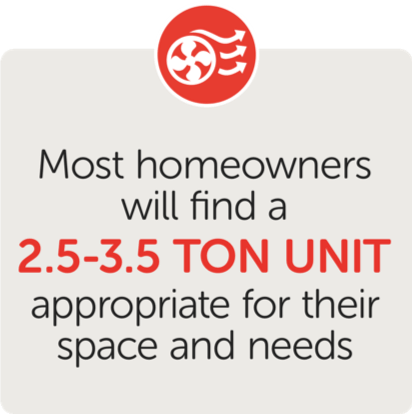
It’s estimated that you’ll need about 18 BTU capacity per square foot of your space, though in warmer climates or a home with high ceilings and open spaces, an air conditioner with more tonnage may be required. Considering the average square footage reported by the National Association of Home Builders for a single-family home is around 2,500 square feet, most homeowners will find a 2.5 to 3.5 ton unit appropriate for their space and needs.
Of course, greater tonnage comes with a higher price tag. While different brands will vary, prepare to pay a few hundred dollars extra for each added ton you need. The more powerful and bigger a system is, the more its upfront cost and additional labor charges will be.
Average total cost
As you can see, there are many factors involved in the final installation cost of your air conditioner. While the size and complexity of the job will affect your budget the most, here are the usual scenarios you could face and the average costs:

Installing one ductless mini-split system -
The cost of one system starts at around $1,700. Easy installation means labor costs are relatively low, around $110. In all, you easily pay under $2,500 to cool isolated sections of your home.
Installing a 4-zone ductless system -
A larger ductless unit can cool more of your home, but usually costs anywhere between $3,000 and $4,000. With labor costs you may pay around $4,500 in total.
Central air is a much more fickle system, here are just a couple common price scenarios:
13 SEER unit replacement -
If your home already has existing ductwork, you are just paying for the unit itself and labor costs. Due to the complexity of the installation, the total cost usually falls around $6,000. Remember, a higher SEER rating or larger unit will be more costly.
New central air system and ductwork -
Ductwork, on average, costs $15 a linear foot, and most homes need a minimum of 200 feet. This project could take a few days, so expect to may more in labor costs as well. A completely new system and ductwork could set you back around $12,000-15,000.
Always leave room in your budget for the unexpected, like if your existing ducts need replacement. Once your new air conditioner is installed, follow proper maintenance to get the most life from this essential home system.
If your air conditioning system does need work in the future, having an affordable repair plan in place is your best defense to keeping your essential home systems running efficiently. See how plans from HomeServe can help you year-round.
